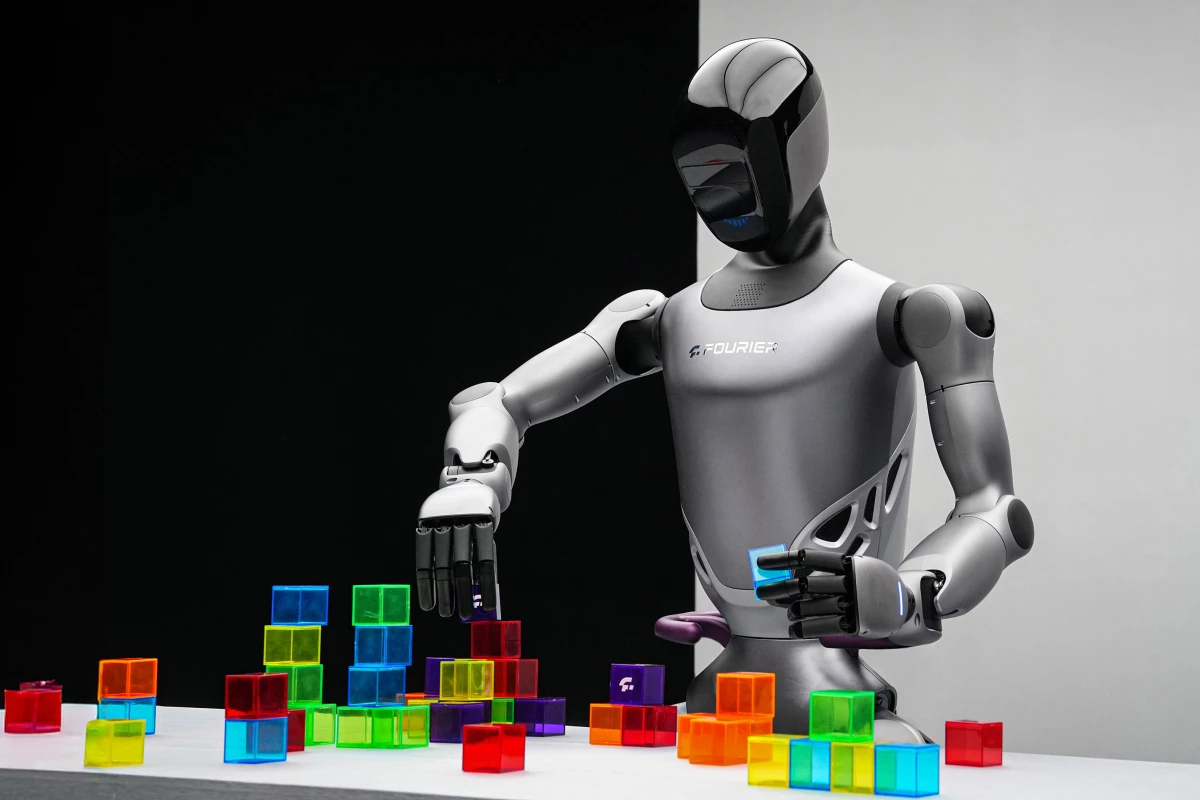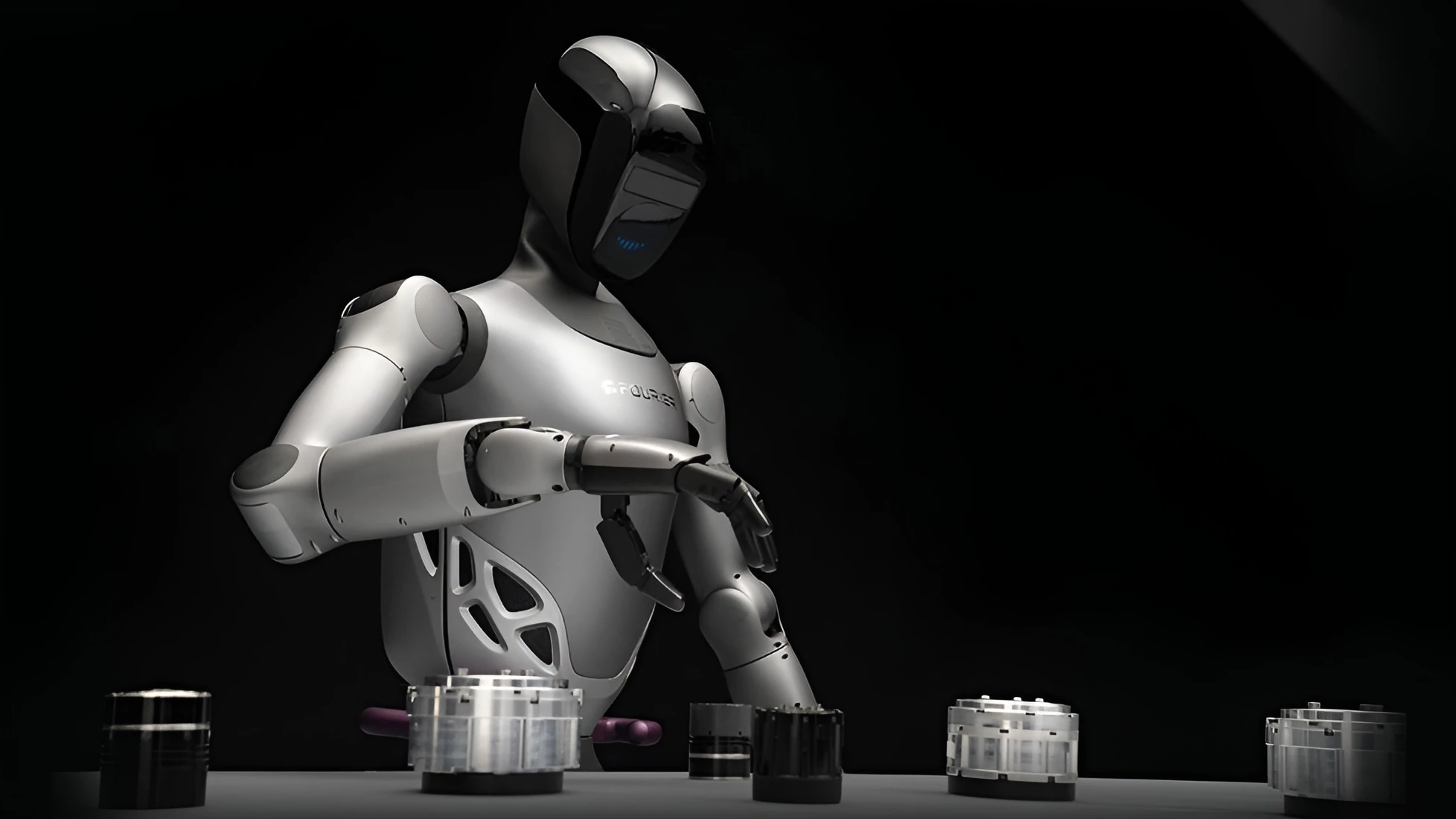One of the more interesting and unique robots in the emerging humanoid space has received an unexpected upgrade. Shanghai's Fourier Intelligence has just launched the GR-2 – taller, heavier, smarter, more dextrous and much stronger than the GR-1.
It also looks a lot more ... finished than the first models we saw in July last year, which had a weirdly skeletal and spindly look to them, in total contrast to the meaty 300-Nm (221-lb-ft) hip actuators that made the GR-1 one of the heaviest-lifting androids on the market, capable of hoisting nearly its own 55-kg (121-lb) weight.
Not lifting with its hands, mind you – it didn't have any – but with a pair of purple plastic grab rails at its pelvic area. Fourier conceived the GR-series humanoids as home helpers for elderly and disabled patients, particularly in countries with rapidly aging populations and no guarantee that human workers will be around to help people get in and out of beds and wheelchairs. If the purple grab handles have a slight medical/rehab look to them, that's why.

The new GR-2, launched a matter of hours ago, has a similar set of grab rails, but its biggest motors can now put out up to 380 Nm (280 lb-ft) of torque, so while Fourier hasn't announced its lifting capacity, it's bound to be a step up from the GR-1.
The GR-2 is also taller than many competing humanoids – it'll look a lot of adults in the eye at 175 cm (5 ft 9 in) tall, and with most of its innards now encased in sleek-looking plastic bodywork, it weighs 63 kg (139 lb).
It's also got a pretty decent-looking set of hands – an extremely complex and critically important part of any android, as we discussed with former Sanctuary AI CTO Suzanne Gildert last year. The GR-2's new hands appear to be electrically actuated – so they won't be as quick or strong as Sanctuary's remarkable Phoenix and its hydraulic hand system – but they offer 12 degrees of freedom and tactile force sensing, allowing them to dynamically adjust their grip in real time, and 'feel out' shapes and materials. Check it out:
Each hand/arm can carry a maximum of just 3 kg (6.6 lb), so it's certainly not designed to be a box jockey or factory mule like the Figure, Tesla and Agility humanoids – at least, in its current form.
Those 12 degrees of hand movement freedom don't bring the GR-2 up level with the human hand, which offers around 27 degrees of freedom thanks to a chaotic-looking bone and muscle structure. And indeed, the competition is working on getting a lot closer, with an Elon-tastic release date of "later this year:"
The new Optimus hand later this year will have 22 DoF
— Elon Musk (@elonmusk) May 5, 2024
The GR-2 is still far from a consumer product, although Fourier has been manufacturing the GR-1 in decent bulk to send out to development partners. These are very much learning platforms for commercial and academic robotics development programs.
As such, it's designed to work with common and open-source robotics development software tools, including ROS, Mujoco and nVidia's Isaac Lab.
Its onboard AI systems are designed to learn by watching or doing; the arms and hands can be controlled via VR telepresence, direct commands, or by literally grabbing and moving its appendages to show it what to do in a technique called "lead-through programming."

It's certainly remarkable seeing how quickly these AI-powered humanoids are developing; realistically, most of the leading contenders now look like their robotic bodies are already good enough to be very useful in the real world, even if they're clearly going to improve in leaps and bounds in the coming months and years.
The hard part remains the same: training these embodied AIs to interact with the world around them in ways that are useful, effective, and above all safe – particularly if these things are going into vulnerable people's homes tasked with helping them get around.
But given enough training data, enough juice and enough computing power, modern AI technology is already achieving spectacular things, and advancing at a rate faster than any previous cutting-edge technology I can recall.
Humanoids still look even more like wobbly toddlers than large language model AIs like ChatGPT – but with no less of a prize than unlimited cheap labor, uncapped economic productivity and a post-work society in their sights, the companies pushing this tech forward are well-funded, highly motivated, and very eager to get these things into circulation.
I sure wouldn't bet against them over a five- or 10-year time horizon.
Source: Fourier







